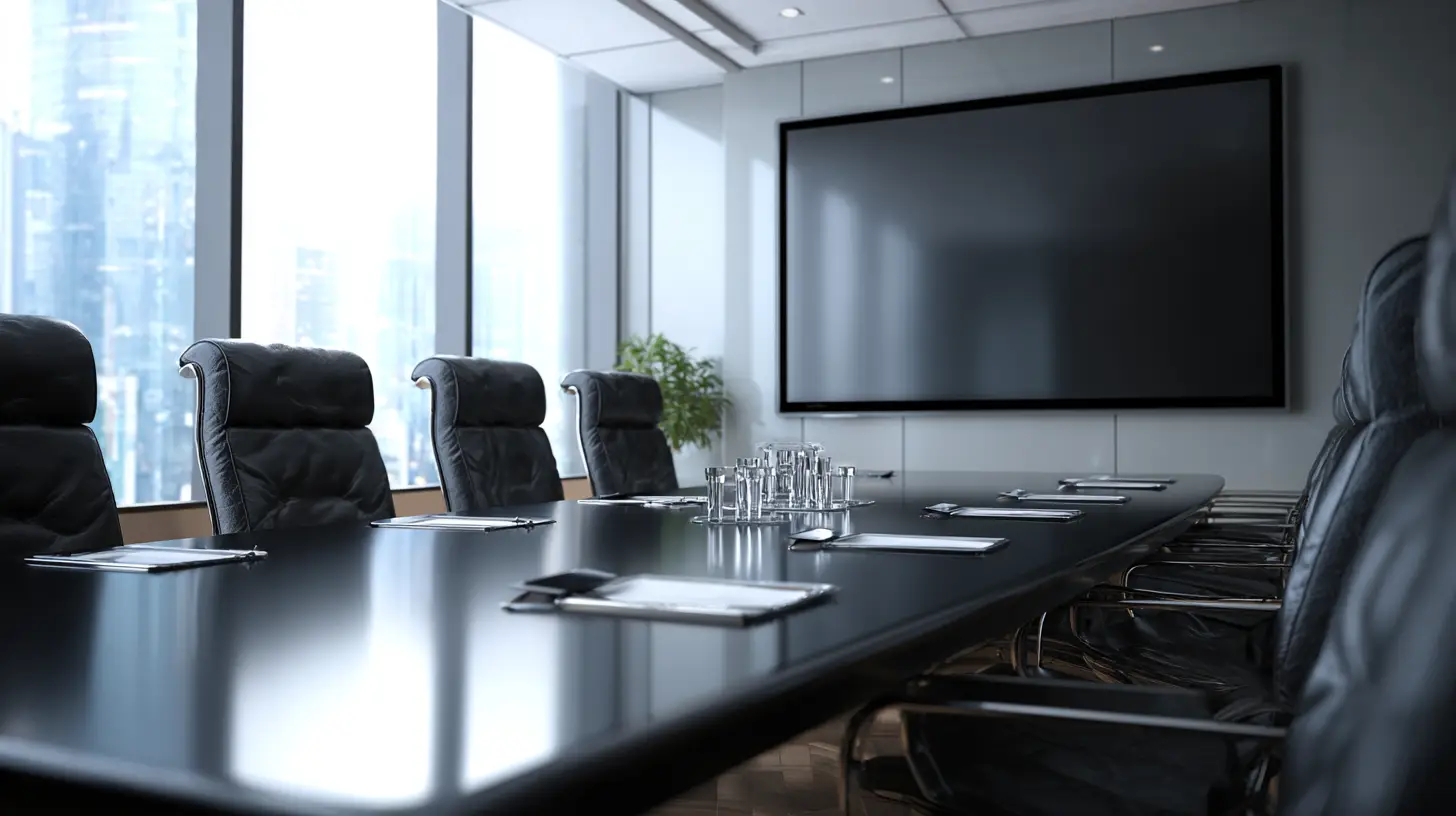
The client's on the line, your team is ready, and the presentation won't display. The camera freezes. Audio cuts out. Every second of silence feels like an eternity while everyone watches you fumble with cables and settings. These failures aren't random—they're symptoms of deeper issues built into how the system was designed, installed, or maintained.
The hidden cost of these disruptions goes beyond frustration. Lost time, interrupted collaboration, and a hit to professional credibility quickly add up. Effective conference room AV troubleshooting isn’t just about getting the system back online. It’s about identifying what’s really going wrong beneath the surface, so the same issue doesn’t keep coming back.
Why Conference Room AV Really Fails (Root Causes, Not Symptoms)
Consumer vs. Commercial Gear
One of the most common reasons for persistent AV issues is the use of consumer-grade AV equipment in a professional environment. While it may look sleek and affordable, it’s not designed for the duty cycles, interoperability, or remote management needs of a business setting. Consumer devices might work fine for an hour-long home video call, but in a conference room that runs multiple meetings daily, the wear quickly shows.
Commercial AV gear, on the other hand, is built for continuous operation, signal stability, and control integration. It can handle higher input loads and is easier to monitor remotely. Using the wrong type of equipment is like expecting a living-room soundbar to fill an auditorium. It might work briefly, but it won’t perform reliably.
Consumer devices might work fine for an hour-long home video call, but in a conference room running multiple meetings daily, the wear shows quickly. The difference between consumer and commercial equipment isn't just price—it's fundamental design philosophy. Commercial gear is built for continuous operation, stable signal paths, and centralized control that consumer devices simply don't provide.
Power and Network Infrastructure
Behind every functional AV setup lies dependable power and network infrastructure. If either is unstable, even the best hardware will fail. Unregulated voltage can cause intermittent shutdowns or flickering displays, while insufficient network capacity creates video lag or audio sync issues.
Think of the network as a highway. When too many video calls, software updates, or data-heavy streams share the same lane, traffic jams are inevitable. A properly designed AV network isolates conferencing traffic using VLANs and enforces Quality of Service (QoS) rules to prioritize real-time media over background data.
Similarly, dedicated power circuits and surge protection keep sensitive AV components safe. When a system repeatedly restarts or loses connection without reason, the issue may be electrical, not digital.
Improper Setup and Calibration
Even with the right hardware, many conference rooms fail due to poor setup or calibration. Incorrect microphone placement can create echo or feedback loops, while displays set at the wrong resolution distort shared content. Cameras installed too low or off-centre make participants appear awkward on screen.
Calibration involves balancing audio levels, setting optimal lighting, aligning camera angles, and adjusting signal gain so every device communicates clearly. Skipping these steps might save time during installation, but it inevitably leads to user complaints and emergency troubleshooting later on.
Neglected Maintenance
AV systems need regular checkups just like vehicles. Firmware updates, cable inspections, and fan cleanings all prevent small issues from snowballing into system-wide failures. Dust buildup, outdated drivers, and overlooked firmware dependencies often cause malfunctions that appear “sudden” but actually develop over months.
A quarterly maintenance routine, covering both software and physical components, keeps performance consistent and prevents unexpected outages during critical meetings.

Early Warning Signs Your System Is Struggling
Most AV failures don’t happen overnight. The system usually gives subtle hints first. Recognizing these signs early allows teams to act before a complete breakdown.
- Intermittent video connections: HDMI cables or ports may be loose or degrading.
- Frequent audio dropouts: Possible signal interference, failing microphones, or network congestion.
- Delayed call joins or frozen interfaces: Indicates outdated firmware or bandwidth limitations.
- Echoes or uneven sound levels: Often caused by poor acoustic calibration or misaligned microphones.
- Frequent reboots or overheating: Suggests failing hardware, inadequate ventilation, or electrical instability.
When these patterns appear across multiple rooms or sessions, it’s a sign that the issue runs deeper than a simple software glitch. Documenting these occurrences helps IT identify recurring trends before they escalate.
A Tiered Troubleshooting Framework (User → IT → Pro)
What Users Can Check Immediately
Users shouldn’t need to rely on IT for every hiccup. A few quick checks often resolve basic issues:
- Confirm that cables are fully seated and not frayed.
- Make sure the display input source matches the connected device.
- Check if the room’s PC or personal laptop is correctly selected for audio and video.
- Ensure microphones or cameras aren’t muted in software settings.
- Restart conferencing software to refresh device recognition.
These steps resolve many “dead room” moments where the hardware itself is fine, but the connections or configurations aren’t.
What IT Should Diagnose
If user checks don’t work, IT should perform deeper diagnostics. This includes reviewing device logs, testing power circuits, and ensuring all firmware versions are aligned across connected devices. IT teams can also verify that the AV network segment is healthy, with enough bandwidth and minimal latency.
Regularly backing up configuration files and keeping room profiles documented prevents wasted time when systems need to be reset. If one conference room repeatedly experiences the same fault while others do not, IT should compare the configurations side by side to locate mismatched settings or outdated drivers.
When to Call a Professional
Some issues simply exceed internal capabilities. Persistent echo, poor acoustics, or recurring electrical anomalies often signal underlying design flaws. Professional AV integrators have specialized tools to trace signal flow, measure room acoustics, and recalibrate the environment.
If failures recur despite proper maintenance, or if multiple rooms experience similar symptoms, it’s time for a full system assessment. A qualified professional can identify bottlenecks, recommend commercial-grade replacements, and design for scalability.

From Band-Aids to Reliability: Designing for Prevention
Most conference room AV problems stem from reactive fixes. Someone plugs in a new cable, updates firmware individually, or swaps devices without documenting changes. Over time, the patchwork approach creates a fragile system where each “fix” introduces new variables.
Prevention begins with proper design. A professionally planned setup accounts for power isolation, network segmentation, device interoperability, and future expansion. Each component is chosen for its specific workload, ensuring consistent performance day after day.
Preventive maintenance keeps everything running smoothly. To list a few: firmware updates, cable replacements, and scheduled inspections form the backbone of long-term reliability. Just like oil changes prevent engine wear, small proactive steps preserve your AV system’s health.
To maintain consistent performance across every meeting room, consider professional conference room AV solutions that are tailored for enterprise needs. Commercial-grade systems designed and calibrated by experts dramatically reduce downtime and user frustration, ensuring every meeting starts on time.
Reliable Meetings Start with Smarter AV Design
Conference room technology doesn’t fail without reason. Behind every glitch is a preventable cause; be it mismatched equipment, poor infrastructure, or neglected maintenance. The key to effective conference room AV troubleshooting is understanding which layer the problem belongs to and addressing it methodically instead of reacting in panic.
When designed and maintained correctly, an AV system should feel invisible—always ready, never distracting. If your conference rooms are still causing problems despite troubleshooting, it might be time to assess whether the system was designed for the workload it's handling. Professional conference room AV solutions can transform unpredictable meeting spaces into reliable collaboration tools.
Where to Contact + Connect with RYGID AV
Mooresville, NC 28117

.webp)